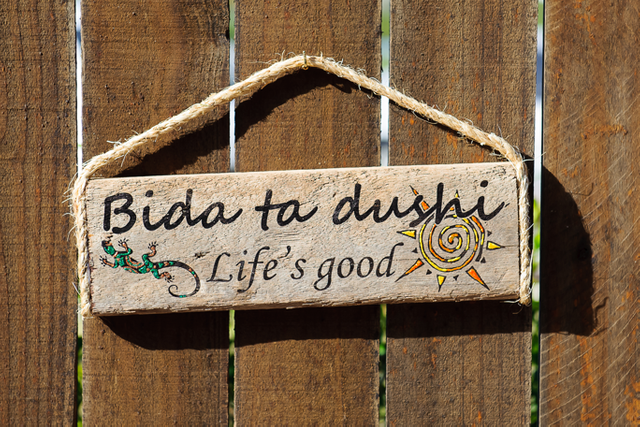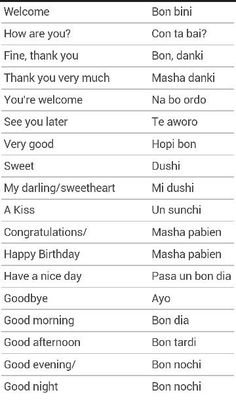Papiamento My Lovely Language

Our Language Papiamento
Our language, together with our anthem, flag and coat of arms forms our identity. Papiamento is a Creole language. When two or more groups of people that speak different languages meet with each other, they create a new language to communicate. If this new language becomes mother tongue, it is called a Creole language.
Papiamento is spoken in Aruba, Bonaire and Curacao. Because of the fact that Papiamento did not have a defined orthography in the first 150 years of its existence, everyone wrote Papiamento in what they thought was the correct way; not according to any specific rules. On May 5, 1976, the island Government installed an Orthographic Committee to formulate and recommend a unified form for the written Papiamento language. On September 13, 1976 the Orthographic Committee handed over a recommendation to the Government of Aruba. On October 30, 1976 the Government of Aruba unanimously approved the recommended orthography.

For Aruba, an etymological orthography was chosen. In Bonaire and Curacao, the phonological orthography is officiall. Etymological orthography is when a word is written in the same way as its origin. In the phonologic orthography every character or combinations of characters that has the same sound is written the same way.
On May 21, 2003, the Parliament of Aruba accepted Papiamento as the official language, until then Dutch was the only official language. This means that official letters to the Government can be written in Dutch or Papiamento.
Papiamento is already used in preschools and special schools education. In 2005 Papiamento was also introduced in secondary education as a subject. Plans have been made to introduce Papiamento since 2008 in the primary schools and it is so since then.